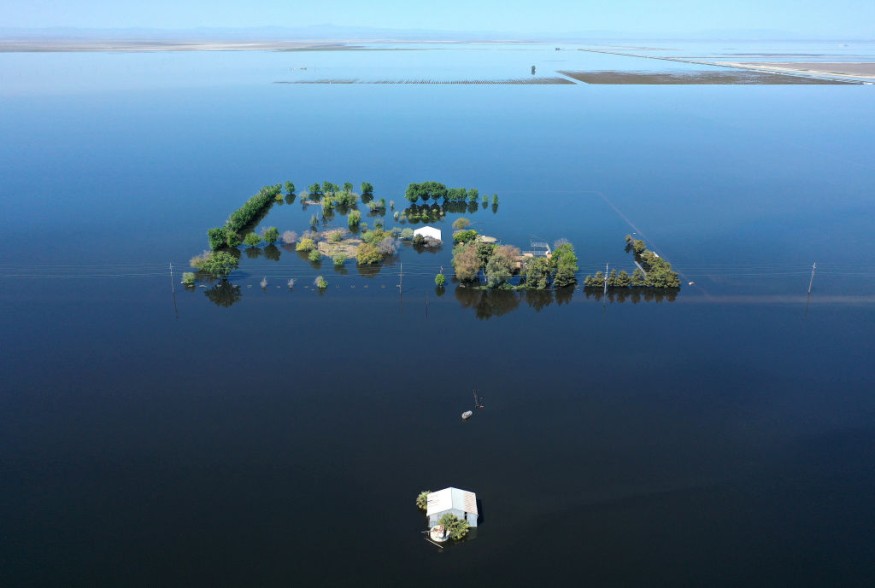Tulare lake was once the largest freshwater lake in the Western United States, located in San Joaquin Valley in Kings County, California.
However, it dried up 80 years ago after its tributary rivers that supply it were diverted.
This diversion was mainly because of agricultural irrigation and for the purposes of municipal water use, according to multiple sources.
Since then, the dry lake has become a farmland with several land infrastructure, as well as several erected establishments that serve California local communities.
Situated west of the Mississippi River, the lake also previously provided wildlife and ancient human inhabitants of the area for thousands of years.
Dubbed as the "ghost lake," the dry lake that remained depleted for several decades is now coming to life once again.
This re-emergence is thanks to the series of train storm in California earlier this year, where residents of California and nearby areas saw recurring heavy rainfall and flooding events.
Due to the wet precipitation, showers and floodwaters have helped refill the state's water reservoirs.
Despite the beneficial impact of such re-emergence to the environment, Tulare Lake is threatening crops and communities in the area surrounding the body of water.
The initial significant evidence of rising water levels at the lake was reported in recent months following the said rainfall events driven atmospheric rivers.
California Communities at Risk

California communities are at risk as the potential overflow of Tulare Lake could not only submerged agricultural farmlands but also residential and commercial properties.
There could be over 100,000 acres of land submerged underwater this year due to the re-emergence of Tulare Lake, according to Jeffrey Mount, a senior fellow at the Public Policy Institute of California's Water Policy Center, who told NBC News, as cited by Newsweek.
In the image above, it can be seen a house is surrounded by floodwaters within the Central Valley part of Tulare Lake on April 14.
If rainfall continues, riverine flooding from the lake can impact existing infrastructure across the area.
Potential Measures
As a result, many farmers living near to Tulare Lake has reportedly started to block the overflowing banks as soon as the flooding began.
In fact, the damage has been done already as 2023's excessive rainfall in the Golden State has cost California farmers their crops and cattle, ABC News reported.
According to the news outlet, farmers, residents, and local officials who live around the lake are racing against time to save their land, homes, livelihood.
2023 Winter Storms
In addition to heavy rain, flooding from 2023's winter storms caused a large accumulation of snowfall in the California mountains.
Later on, warm weather caused excessive snowmelt in Tulare and Kings counties, which left streets and properties inundated by several feet of floodwaters, the U.S. news outlet added.
Experts predict the worst is yet to come surrounding the threat posed by the ghost lake, with mountain snowmelt being the greatest threat.
California's water managers estimated that the Sierra snowpack is currently around 300% of its normal level.
If temperatures this spring season climbs, the rivers and creeks feeding Tulare Lake could be refilled as well, according to NBC Bay Area.
Related Article: Drought Reveals Forgotten Utah Ghost Town
© 2025 NatureWorldNews.com All rights reserved. Do not reproduce without permission.





